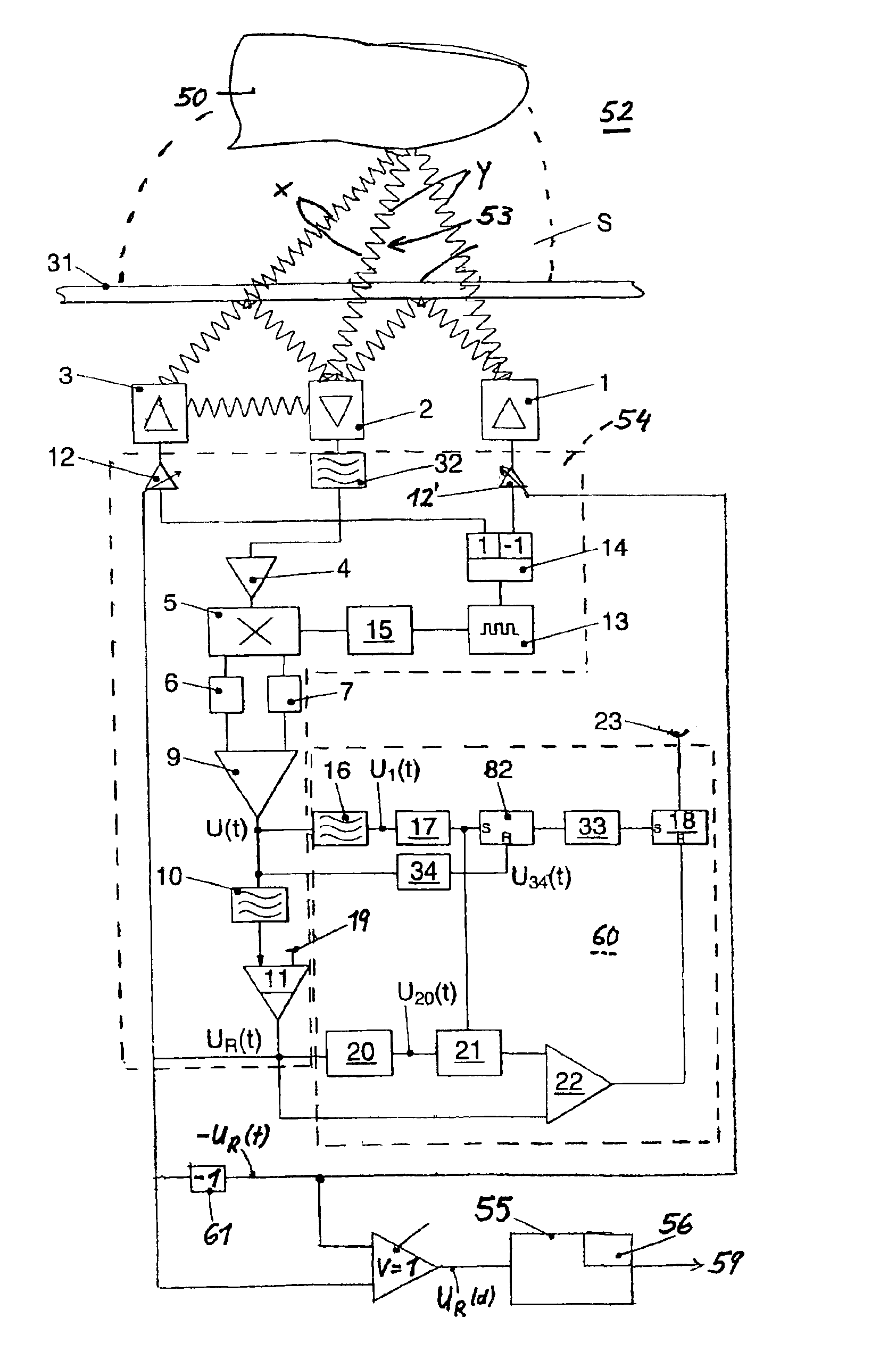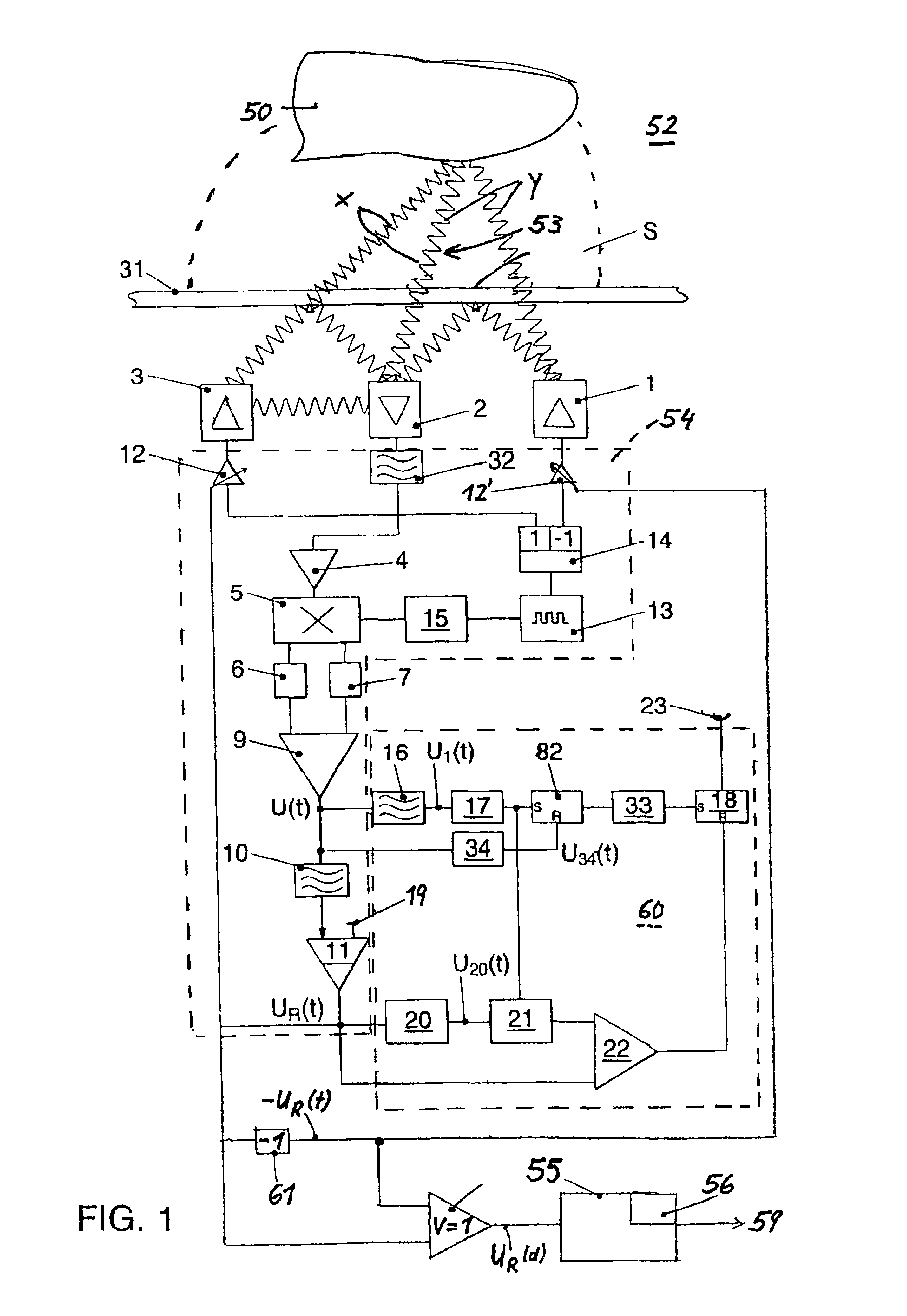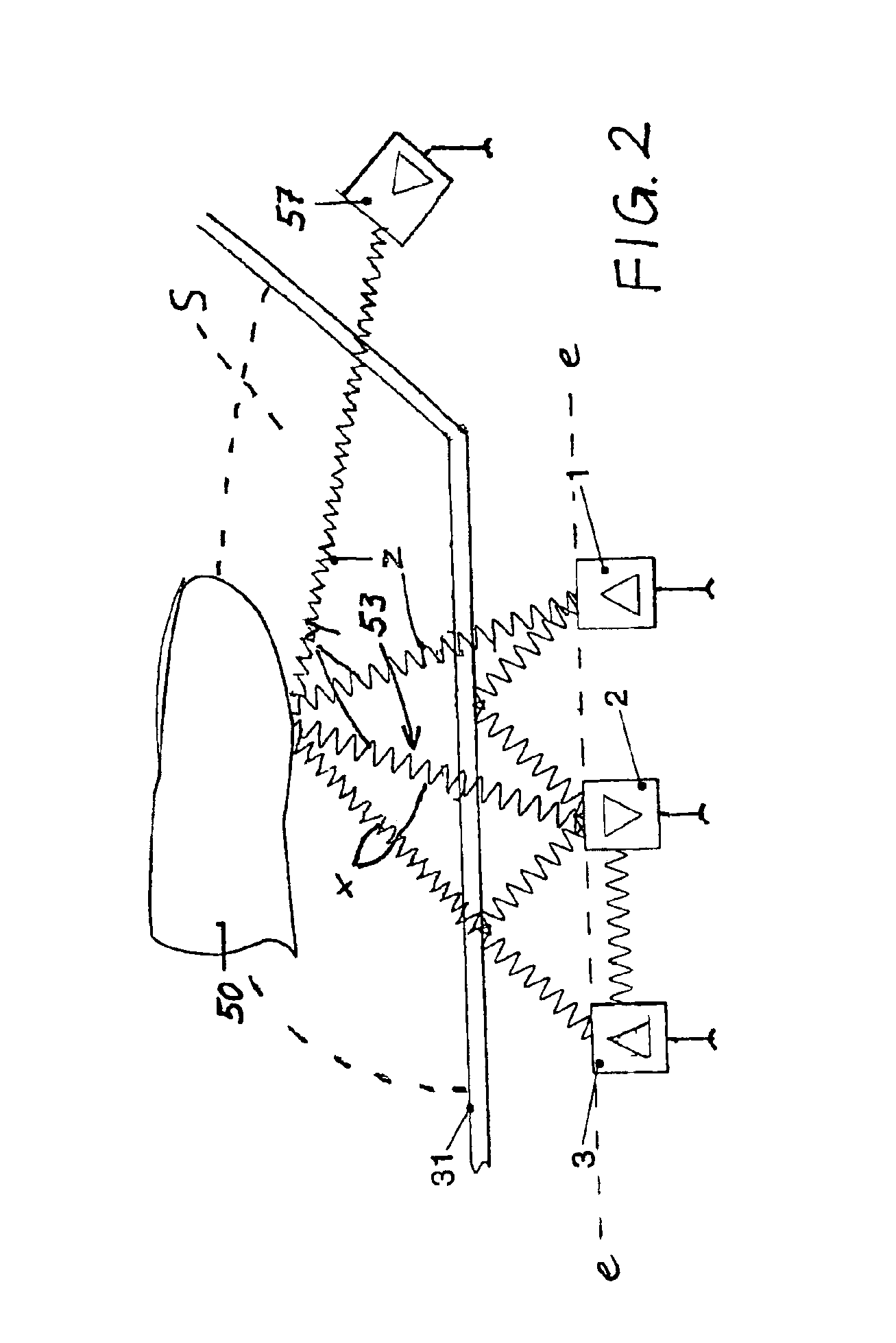Method and devices for opto-electronically determining the position of an object
- Summary
- Abstract
- Description
- Claims
- Application Information
AI Technical Summary
Benefits of technology
Problems solved by technology
Method used
Image
Examples
Embodiment Construction
[0031]The invention is now explained in more detail with reference to the enclosed drawings. However, the exemplified embodiments are only examples and are not to restrict the inventive concept to a specific arrangement.
[0032]The exemplified embodiments show various developments of an opto-electronic apparatus for determining the position of an object 50 through the intermediary of a measuring arrangement, which is separated from the object 50 by a medium 31, 52, which is permeable to at least one specific radiation. The apparatus is equipped with at least two light emitting sources of radiation 1, 3, 57 and at least one radiation receiver 2. The radiation receiver 2 passes its signals, the value of which depends on the amount of light received, to an evaluation unit 55. Sources of radiation 1, 3, 57 and radiation receiver 2 can be disposed in such a manner that the light emitted by the transmitting member is dispersed or reflected by objects, which are situated within a certain act...
PUM
 Login to View More
Login to View More Abstract
Description
Claims
Application Information
 Login to View More
Login to View More - R&D
- Intellectual Property
- Life Sciences
- Materials
- Tech Scout
- Unparalleled Data Quality
- Higher Quality Content
- 60% Fewer Hallucinations
Browse by: Latest US Patents, China's latest patents, Technical Efficacy Thesaurus, Application Domain, Technology Topic, Popular Technical Reports.
© 2025 PatSnap. All rights reserved.Legal|Privacy policy|Modern Slavery Act Transparency Statement|Sitemap|About US| Contact US: help@patsnap.com



